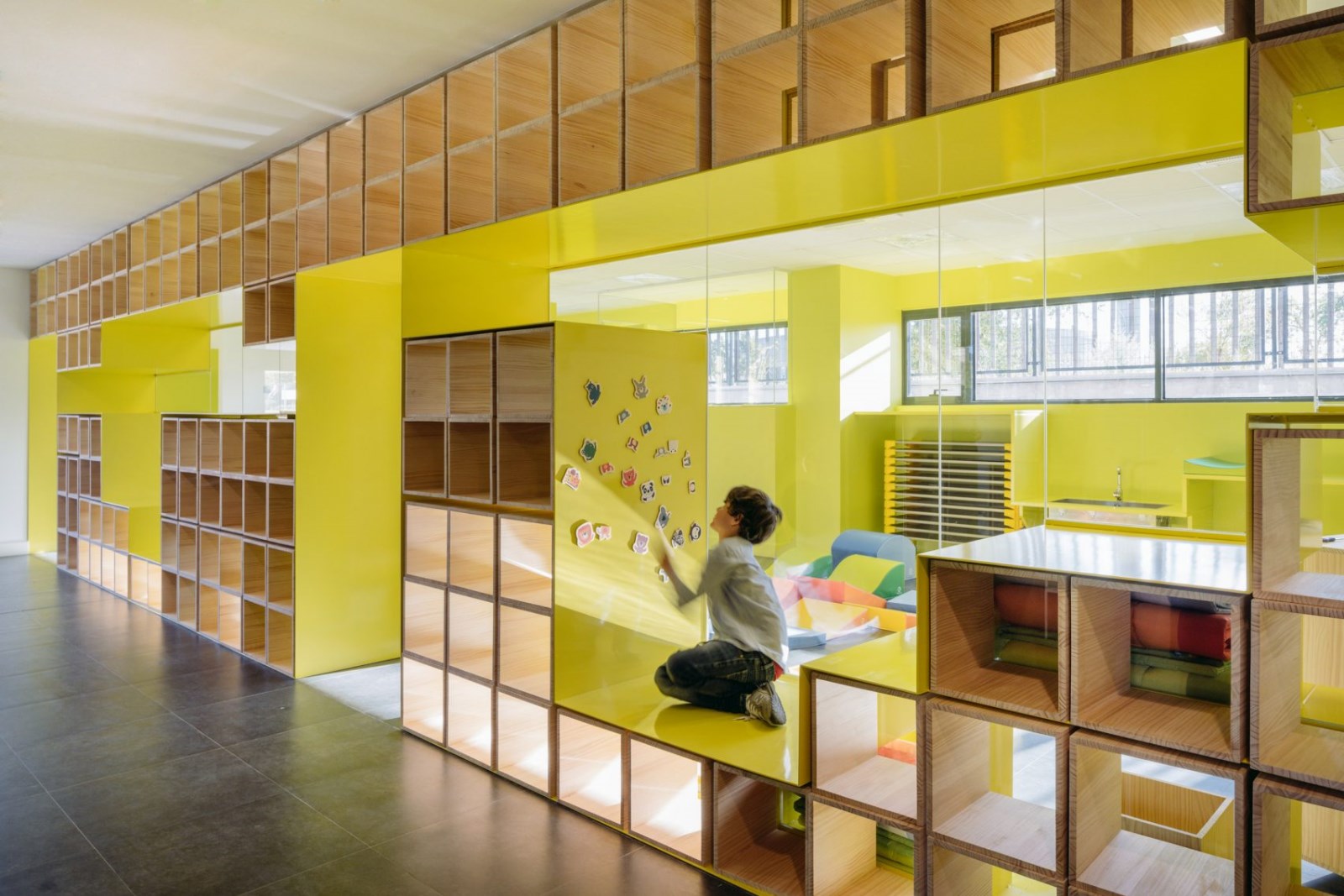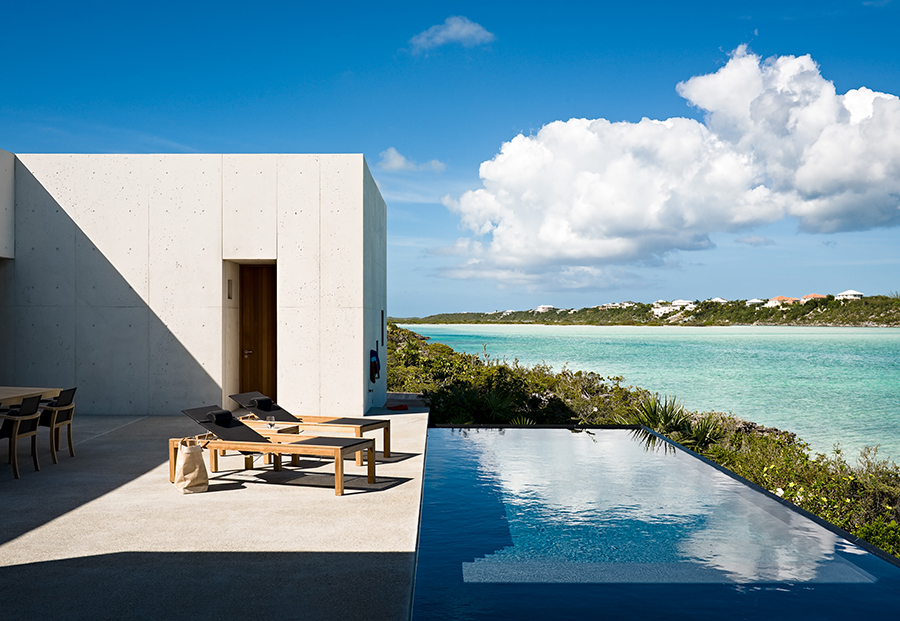AD Classics Palais des Papes Pierre Poisson - Jean de Louvres
2017-03-09 04:00
Photo by Jean-Marc Rosier; courtesy of Wikimedia user Ampon (licensed under CC BY-SA 3.0)
图片由Jean--Marc Rosier提供,由维基媒体用户Ampon提供(由-SA 3.0认证,由CC授权)
14世纪初,整个意大利-尤其是罗马-都被一种持续而普遍的不安定感所困扰。这座古城是各个派系在内战边缘的冲突中争夺权力的场所。与此同时,教皇波尼法斯八世与法国国王菲利普四世之间的紧张关系日益加剧,导致前者过早死亡,后者被逐出国门。他短暂的继任者,教皇本尼迪克特十一世,是第一个离开罗马,而是选举他的家在更北方的城市佩鲁贾;是本尼迪克特的继任者克莱门特五世,谁将首先建立教皇在阿维尼翁1305年。在这样做时,新教皇希望开始修复教会与法国和英国国王的关系和权威。逃离饱受战争蹂躏的意大利是次要的动机,尽管很重要。
In the early 14th Century, all of Italy—but Rome, in particular—was plagued by a constant and pervasive sense of unrest. The ancient city was the arena in which various factions vied for power in a conflict bordering on outright civil war. Meanwhile, tensions were mounting between Pope Boniface VIII and King Philip IV of France, resulting in the premature death of the former and the excommunication of the latter. His short-lived successor, Pope Benedict XI, was the first to vacate Rome, electing instead to make his home in the more northerly city of Perugia; it was Benedict’s successor, Clement V, who would first establish the papacy in Avignon in 1305. In doing so, the new pontiff hoped to begin repairing the Church’s relationship with, and authority over, the Kings of France and England. Escaping the strife of war-torn Italy was a secondary, albeit significant, motivation.[1]
A depiction of Avignon in 1700 by Robert Bonnart; the towers of the Palais des Papes are visible at the top left. ImageCourtesy of Wikimedia user Aa77zz (Public Domain)
在1700年由罗伯特·博尼艺术(RobertBonnart)描绘的维尼翁,万国宫的塔在左上角是可见的。WikiMedia用户aa77zz(公共域)的映像
阿维尼翁位于法国、意大利和德国之间,是克莱门特五世恢复教会对欧洲不同国家的仁慈但无可置疑的权威的理想行动基地。罗马曾经是一个从不列颠群岛延伸到中东的帝国的纽带,而阿维尼翁则是中世纪基督教世界的中心,这个世界只包括欧洲。它靠近Rh ne河和Durance河的交汇处,也使得从这座城市到欧洲其他地方的交通相对方便:一个快速的信使可以在不到两周的时间内把消息从阿维尼翁带到像伦敦或罗马这样遥远的地方。尽管有这些优势,但阿维尼翁缺乏罗马的历史宗教意义,花了20年时间,该市的一位教皇才把普罗旺斯视为教会的临时住所。
Located between France, Italy, and what would come to be known as Germany, Avignon was an ideal base of operations for Clement V’s mission to restore the Church’s benevolent, but unquestioned, authority over the disparate states of Europe. While Rome had once been the nexus of an empire which had stretched from the British Isles to the Middle East, Avignon was at the center of the medieval Christian world which only encompassed Europe. Its proximity to the intersection of the Rhône and Durance Rivers also made transit from the city to the rest of Europe relatively convenient: a swift messenger could bring news from Avignon to destinations as remote as London or Rome in less than two weeks. Despite these advantages, however, Avignon lacked the historical religious significance of Rome, and it took two decades before one of the city’s pontiffs saw Provence as more than a temporary home for the Church.[2]
A plan of the Palais des Papes drawn in 1921. The Palais Vieux, or Old Palace, is at the left, while the Palais Neuf, or New Palace, is on the right. ImageCourtesy of Wikimedia user François GOGLINS (Public Domain)
1921年绘制的帕斯宫计划。万国宫,或故宫,在左边,而新宫,在右边。维基媒体用户Fran ois GOGLINS(公共领域)的形象礼貌
尽管教皇本尼迪克特十二世与他的前任一样渴望回到罗马,但他不得不承认,意大利持续的动荡使得这样的梦想无法实现。1335年,严厉而明智的本尼迪克特决定建造一座宫殿,以容纳自己和他的宫廷,并在这样做的同时,建立阿维尼翁作为他永久的权力所在地。他选择在这座城市前主教宫殿的遗址上建造他的新家,阿维尼翁主教得到了一位最近去世的红衣主教的补偿。
Despite sharing his predecessors’ longing to return to Rome, Pope Benedict XII was forced to acknowledge that the continued upheaval in Italy made such a dream untenable. It was then, in 1335, that the austere and sensible Benedict resolved to build a palace to house himself and his court and, in so doing, establish Avignon as his permanent seat of power. He chose to build his new home on the site of the city’s former bishop’s palace, the Bishop of Avignon being compensated with the residence of a recently deceased cardinal.[3]
An aerial view of the Palais; the former Bishop’s Palace stood on the site of the Old Palace on the left side of the photo. ImageCourtesy of Flickr user jean-louis Zimmermann (licensed under CC BY 2.0)
鸟瞰万国宫;前主教宫矗立在照片左边的故宫遗址上。Flickr用户Jean-Louis Zimmermann的图像礼貌(CCby2.0许可)
建筑师本笃十二世选择的宫殿是皮埃尔·泊松,他和教皇本人一样,来自现在法国西南部的米雷波瓦。根据主教官邸的布局,泊松负责建造一座大致为长方形的建筑;为了与本尼迪克特十二世的个性保持一致,它是一座简朴的建筑,没有雕塑装饰,更让人想起受保护的修道院或堡垒,而不是宫殿。[4,5]
The architect Benedict XII chose for his palace was Pierre Poisson – a man who, like the Pope himself, was originally from Mirepoix in what is now southwestern France. Poisson oversaw the construction of a roughly rectangular building based on the layout of the bishop’s residence which once occupied the site; in keeping with Benedict XII’s personality, it was an austere structure devoid of sculptural ornamentation and more reminiscent of a protected convent or a fortress than a palace.[4,5]
进入这第一次投生的万国宫,现在被认为是“故宫”,是通过一个坚固的入口门,从建筑物的南翼突出(后来拆除在下一个主要的建设阶段)。中央庭院的不规则四边形被两层楼高的展厅包围,与围绕建筑周边建造的各种塔楼相比显得矮小。[6]北侧有宫殿的第一个教堂:40米(131.2英尺)长,只有8米(26.2英尺)宽,这个教堂被认为不成比例,太小了,离教皇的公寓太远了。这些令人不快的品质,再加上房间在冬天变得令人难以忍受的寒冷,最终导致宗教仪式搬迁到万国宫对面的一个新礼拜堂。
Entry to this first incarnation of the Palais, now deemed the “Old Palace,” was through a fortified entry gatehouse projecting from the southern wing of the building (later demolished during the next major phase of construction). The irregular quadrilateral of the central courtyard was surrounded by galleries two stories tall and dwarfed by the various towers constructed around the building’s periphery.[6] The northern wing contained the palace’s first chapel: 40 meters (131.2 feet) long and only 8 meters (26.2 feet) wide, this chapel was considered disproportionate, too small, and too distant from the Pope’s apartments. These undesirable qualities, combined with the room’s tendency to become unbearably cold in winter, ultimately resulted in the relocation of pontifical ceremonies to a new chapel on the opposite end of the Palais.[7]
The walls of the Old Palace, adorned only with crenellations and simple pointed arches, appear more suited to a fortress than a palace. ImagePhoto by Jean-Marc Rosier; courtesy of Wikimedia user Ampon (licensed under CC BY-SA 3.0)
故宫的墙壁,只装饰有凹痕和简单的尖拱,看起来更适合堡垒而不是宫殿。图片由Jean--MarcRosier提供;维基媒体用户Ampon提供(CC由-SA3.0授权)
周围的两翼-东方的协进会,西边的家庭协进会,南部的秘密会议-包括教皇宫廷成员的住宅和办公室。位于修道院西北角的“故宫”中最高的塔在皇宫的东南角,矗立着“教皇之塔”和“天使之塔”,这是教皇本人公寓的翅膀和塔。
The surrounding wings—the Consistoire to the east, the Aile des Familiers to the west, and the Conclave to the south—contained the residences and offices of members of the papal court. The Tour de la Campane, the tallest tower in the “Old Palace” (and still the highest point in the building overall), stood at the northwest corner of the cloister, its crenellated crown dominating the Palais. Jutting from the southeast corner of the palace stood the Tour du Pape (“Pope’s Tower”) or Tour des Anges (“Tower of the Angels”), the wing and tower which contained the apartments of the pontiff himself.[8]
The Tour de la Campane, as seen from the Old Palace courtyard; its crenellated roofline is the highest point of the Palais des Papes. ImageCourtesy of Flickr user Satoshi Nakagawa (licensed under CC BY-SA 2.0)
从故宫的庭院中看到的环行的卡米林;它的凹凸不平的屋顶是帕斯宫的最高点。Flickr用户Satoshi Nakagawa的图像礼貌(CCby-SA2.0许可)
建造的第二个主要阶段是在本尼迪克特十二世的接班人克莱门特六世的领导下建造的“新宫殿”。克莱门特六世下令完成故宫东北角的塔鲁利亚斯和厨房大楼,并在教皇的公寓中增加衣柜塔。然而,他对帕普斯宫的看法远比本尼迪克特十二世的设想宏伟得多。为了完成这项更大范围的工作,克莱门特六世委托了法兰西岛(巴黎周边地区)的让·德·卢夫尔(Jean De Louvres)的设计服务。德卢浮宫立即开始工作,召集了600人,清理了宫殿周围的街区,为他的大量增建让路。
The second major phase of construction, resulting in the “New Palace,” took place under Benedict XII’s immediate successor, Clement VI. Clement VI ordered the completion of the Trouillas and Kitchen Towers at the northeast corner of the Old Palace, as well as the addition of the Wardrobe Tower to the papal apartments. His vision for the Palais des Papes, however, was far grander than that of Benedict XII’s. To execute this greater scope of work, Clement VI commissioned the design services of Jean de Louvres of Île-de-France (the region surrounding Paris). De Louvre immediately set about his work, gathering 600 men and clearing out the neighborhood surrounding the palace to make way for his sizable additions.[9]
In contrast to the more monolithic Old Palace, the Great Dignitaries’ Wing of the New Palace features more decorative flair to signify its status as a papal residence. ImageCourtesy of Flickr user jean-louis Zimmermann (licensed under CC BY 2.0)
与更独断专行的故宫相比,大显贵的新宫翼更具有装饰的天分,象征着它作为教皇官邸的地位。Flickr用户Jean-Louis Zimmermann的图像礼貌(CCby2.0许可)
不同于松柏的“旧宫,”,新宫殿并不羞于装饰或宏伟。德拉夫尔"第一个项目是大观众大厅,一个52米(170.6英尺)长的室,位于新格兰德·查贝尔(“大教堂”)的地面。大厅用尖尖的哥特式地下室加冕,用意大利画家MatteoGiovanetti在壁画上装饰着一幅壁画,他从《旧约全书》中画了20个数字的构图,金额为600个花卉。在观众大厅上面是大教堂本身,在52米(170.6英尺)乘15米(49.2英尺),是本尼迪克特十二(Benedictxii)下建造的原始建筑的两倍。除了伟大的显要人物”在新宫的两翼和旧宫殿的教皇宿舍里,这两个翅膀容纳了公证人和金融官员的办公室,定义了一个第二大的庭院。[10,10,11]
Unlike the somber, unadorned “Old Palace,” the New Palace did not shy away from embellishment or grandeur. De Louvres’ first project was the Grand Audience Hall, a 52 meter (170.6 foot) long chamber on the ground floor of the new Grande Chapelle (“Great Chapel”). The hall is crowned with pointed Gothic vaults and adorned with a fresco by the Italian painter Matteo Giovanetti, who painted a composition of 20 figures from the Old Testament for the sizable sum of 600 Florins. Above the Audience Hall was the Great Chapel itself, which, at 52 meters (170.6 feet) by 15 meters (49.2 feet), was over twice the size of the original built under Benedict XII. With the addition of the Great Dignitaries’ Wing—which housed the offices of the notaries and financial officials—to the west, the two wings of the New Palace and the papal quarters of the Old Palace defined a second, larger courtyard.[10,11]
Bounded by the papal apartments and the two wings of the New Palace, the Cour d’Honneur is substantially larger than the courtyard defined by the cloisters of the Old Palace. ImagePhoto by Jean-Marc Rosier; courtesy of Wikimedia user Ampon (licensed under CC BY-SA 3.0)
在教皇的公寓和新宫的两翼的包围下,皇宫的院子比故宫的修道院所定义的四合院要大得多。图片由Jean--MarcRosier提供;维基媒体用户Ampon提供(CC由-SA3.0授权)
到1352年克莱门特六世去世时,帕斯宫基本上已经建成。仅仅25年后,教皇终于回到罗马;在14世纪末和15世纪初的大分裂之后,这座宫殿后来被遗产和副遗产占领,直到18世纪末的法国大革命。在下个世纪,曾经享有盛名的万国宫被用作兵营,直到1906年它才向公众开放。从那时起,这座曾经伟大的阿维尼翁教皇之家进行了重大的修复和修缮,以保存其数百年的古老建筑,每年都有成千上万的游客蜂拥而至。[12,13]尽管建造万国宫并赋予它目的教皇们几个世纪前就撤出了这座巨大的建筑,它雄伟的塔楼和宏伟的哥特式大厅,无声地提醒着欧洲和基督教历史上的一个时期,否则,这段历史就太容易被遗忘了。
By the time of Clement VI’s death in 1352, the Palais des Papes was essentially complete. Only 25 years later, the papacy finally returned to Rome; after the Great Schism of the late 14th and early 15th Centuries, the palace was subsequently occupied by Legates and Vice-Legates until the French Revolution at the end of the 18th Century. For the next century, the once-prestigious Palais was put to use as a barracks, a role it would play until 1906, when it was opened to the public. Since then, the once-mighty home of the Avignon papacy has undergone significant restoration and repair to preserve its centuries-old architecture for the appreciation of the thousands of visitors who flock to it each year.[12,13] Although the Popes who built the Palais and gave it purpose vacated the massive structure centuries ago, its imposing towers and grandiose Gothic halls stand as a silent reminder of a period in European and Christian history which would otherwise be all too easy to forget.
A 15th Century drawing of Avignon by Étienne Matellange; the Palais des Papes dominates the skyline at the top right. ImageCourtesy of Wikimedia user Aa77zz (Public Domain)
一幅15世纪的阿维尼翁画,作者是蒂安·马泰兰格;帕斯宫在右上角的天际线上占主导地位。维基媒体用户Aa77zz(公共领域)的形象礼貌
[1]参考文献[1]。帕普斯·达维尼翁宫。巴黎:西塞国家历史博物馆,1965年。P7-8。[2]Renouard,Yves。阿维尼翁教皇:1305-1403。伦敦:费伯
References [1] Gagnière, Sylvain. Palais des Papes d'Avignon. Paris: Caisse National des Monuments Historiques, 1965. p7-8. [2] Renouard, Yves. The Avignon Papacy: 1305-1403. London: Faber & Faber, 1970. p20-36. [3] Renouard, p40-41. [4] Gagnière, p16-17. [5] "The biggest Gothic palace in the world." Palais des Papes - Avignon. Accessed February 26, 2017. [access]. [6] Gagnière, p19-21. [7] Colombe, Gabriel. Le Palais des Papes d'Avignon. Paris: Société Française d'Archéologie, 1939. [8] Colombe, p10-55. [9] “The biggest Gothic palace in the world.” [10] Gagnière, p67-99. [11] “The biggest Gothic palace in the world.” [12] "The Popes' Palace of Avignon." Avignon et Provence. Accessed February 26, 2017. [access]. [13] “The biggest Gothic palace in the world.”
 举报
举报
别默默的看了,快登录帮我评论一下吧!:)
注册
登录
更多评论
相关文章
-

描边风设计中,最容易犯的8种问题分析
2018年走过了四分之一,LOGO设计趋势也清晰了LOGO设计
-

描边风设计中,最容易犯的8种问题分析
2018年走过了四分之一,LOGO设计趋势也清晰了LOGO设计
-

描边风设计中,最容易犯的8种问题分析
2018年走过了四分之一,LOGO设计趋势也清晰了LOGO设计

























































